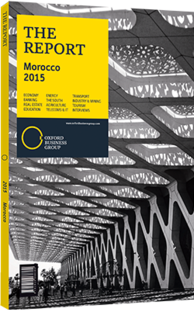Romain Berthon and Lina Fassi-Fihri, Partners, Lefèvre Pelletier & associés: Viewpoint

In 2014, a plan to stimulate industrial growth was launched by the minister of industry, trade, investment and digital economy. The new plan is set to run through 2020 and overhauls several areas under the former plan.
Along with agriculture, energy and mining, trade and services, industry is one of the main sectors that could accelerate further economic growth. In other emerging countries, industry contributes an average of 23% to national GDP, versus 14% in Morocco currently.
A key goal under the plan is the creation of 500,000 jobs. Industrial ecosystems are the base of the plan, with major industrial players helping to energise growth through supply chains. These ecosystems can help to create jobs and new businesses by transferring technology and upgrading the quality of products. The objective is to build an integrated ecosystem and have all actors of the supply chain located in Morocco in a single geographic zone that fits the needs of the market. The phosphate industry, led by the Office Ché rifien des Phosphates (OCP S.A.), and textile industry, with the Moroccan Association of Textile and Clothing Industries, are key elements in this new system.
The Ministry of Industry, Trade, Investment and Digital Economy (Ministère de l'Industrie, du Commerce, de l'Investissement et de l'Economie Numérique, MICIEN) is also seeking to support other sectors such as automotive and aviation, in addition to agribusiness, cement, electricity, electronics, pharmaceuticals, plastic, renewable energy, and shipbuilding. The level of public assistance depends on the goals achieved. This principle has already been complied with under investment conventions agreed between the state and private investors. In the tourism sector, for example, real estate components of a tourism project can be sold by the investor to third parties only where the tourism component has been completed and is in operation.
Several other measures will also support the plan. Firstly, an industrial fund of Dh20bn (€2.18bn) covering the period 2014-20 has been set up to help finance a variety of projects. Secondly, training plans to match the needs of industrial companies, the OCP skills plan for instance, will also be targeted. It will also be key to call upon public procurement in the development of industrial ecosystems. Moreover, the possibility will exist to access approximately 1000 ha of land to build industrial areas available for rent.
Accessing land suitable for industrial activity at a price that is competitive and compatible with businesses is one of the main issues being addressed by the plan. An investor willing to set up an industry plant must first identify a suitable location. The investor may then buy the land and build the plant, taking responsibility for all of the real estate risks, including ownership, value of real estate assets, maintenance of the assets, design and construction risks, and so forth.
Investors may also lease the plant and reduce their risks in other ways. In such a case, plants might be located in a private industrial park where infrastructure is developed by a private operator who also manages the park and the construction of each plant. To address this land issue, MICIEN needs to harmonise the different types of land regimes in Morocco, namely privatestate domain, public-state domain, habous, private registered or non registered, agricultural, and collective.
The legal framework for each type of land is indeed very different. While private-registered land is the simplest and offers the greatest number of possibilities, in the context of industrial purposes it is rare and very expensive. Land managed by public entities, meanwhile, is more complex due to a variety of restrictions, including a prohibition on selling land to private developers (except in restrictive cases), a limited lease duration for private park developers (which render the infrastructure investments less attractive), and a prohibition to mortgage (which render the financing of the industrial development very difficult).
The best way to reconcile the current scarcity of public lands and their complex regimes is to establish a new, revamped land regime for industrial purposes that supersedes existing rules and regulations.
You have reached the limit of premium articles you can view for free.
Choose from the options below to purchase print or digital editions of our Reports. You can also purchase a website subscription giving you unlimited access to all of our Reports online for 12 months.
If you have already purchased this Report or have a website subscription, please login to continue.

